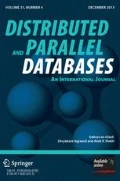Abstract
Wireless sensor networks possess significant limitations in storage, bandwidth, processing, and energy. Additionally, real-time sensor network applications such as monitoring poisonous gas leaks cannot tolerate high latency. While some good data compression algorithms exist specific to sensor networks, in this paper we present TinyPack, a suite of energy-efficient methods with high-compression ratios that reduce latency, storage, and bandwidth usage further in comparison with some other recently proposed algorithms. Our Huffman style compression schemes exploit temporal locality and delta compression to provide better bandwidth utilization important in the wireless sensor network, thus reducing latency for real time sensor-based monitoring applications. Our performance evaluations over many different real data sets using a simulation platform as well as a hardware implementation show comparable compression ratios and energy savings with a significant decrease in latency compared to some other existing approaches. We have also discussed robust error correction and recovery methods to address packet loss and corruption common in sensor network environments.





















Similar content being viewed by others
References
Huffman, D.A.: A method for the construction of minimum-redundancy codes. In: Proceedings of the I.R.E. (1952)
Vitter, J.S.: Design and analysis of dynamic Huffman codes. J. ACM 34(4), 825–845 (1987)
Ziv, J., Lempel, A.: A universal algorithm for sequential data compression. IEEE Trans. Inf. Theory 23(3), 337–343 (1977)
Arici, T., Gedik, B., Altunbasak, Y., Liu, L.: PINCO: a pipelined in-network compression scheme for data collection in wireless sensor networks. In: Proceedings of 12th International Conference on Computer Communications and Networks, October 2003
Petrovic, D., Shah, R.C., Ramchandran, K., Rabaey, J.: Data funneling: routing with aggregation and compression for wireless sensor networks. In: Proceedings of First IEEE International Workshop on Sensor Network Protocols and Applications, May 2003
Sadler, C., Martonosi, M.: Data compression algorithms for energy-constrained devices in delay tolerant networks. In: Proceedings of the ACM Conference on Embedded Networked Sensor Systems (SenSys) (2006)
Marcelloni, F., Vecchio, M.: An efficient lossless compression algorithm for tiny nodes of monitoring wireless sensor networks. Comput. J. 52(8), 969–987 (2009)
Gandhi, S., Nath, S., Suri, S., Liu, J.: GAMPS: compressing multi sensor data by grouping and amplitude scaling. In: Proceedings of the 35th SIGMOD international Conference on Management of Data, New York, NY, pp. 771–784 (2009)
Mainwaring, A., Culler, D., Polastre, J., Szewczyk, R., Anderson, J.: Wireless sensor networks for habitat monitoring. In: WSNA’02: Proceedings of the 1st ACM International Workshop on Wireless Sensor Networks and Applications, pp. 88–97. ACM, New York (2002)
Bodik, P., Hong, W., Guestrin, C., Madden, S., Paskin, M., Thibaux, R.: Intel Berkley Labs. (2004)
Zhang, P., Sadler, C.M., Lyon, S.A., Martonosi, M.: Hardware design experiences in ZebraNet. In: Proc. of the ACM Conf. on Embedded Networked Sensor Systems (SenSys) (2004)
Metzler, J.M., Linderman, M.H., Seversky, L.M.: N-CET: network-centric exploitation and tracking. In: MILCOM 2009—2009 IEEE Military Communications Conference, October. IEEE, New York (2009)
Zhao, X., Qian, T., Mei, G., Kwan, C., Zane, R., Walsh, C., Paing, T., Popovic, Z.: Active health monitoring of an aircraft wing with an embedded piezoelectric sensor/actuator network: II. Wireless approaches. Smart Mater. Struct. 16(4), 1218–1225 (2007)
Crossbow Technology, Inc.: Mica2 and MicaZ Datasheets. http://www.xbow.com/ (2010)
Shannon, C.E.: A mathematical theory of communication. Bell Syst. Tech. J. 27, 379–423, 623–656 (1948)
Madden, S., Franklin, M., Hellerstein, J., Hong, W.: TAG: a tiny aggregation service for ad-hoc sensor networks. In: Proceedings of the Fifth Symposium on Operating Systems Design and Implementation (OSDI’02) (2002)
Sharaf, A., Beaver, J., Labrinidis, A., Chrysanthis, K.: Balancing energy efficiency and quality of aggregate data in sensor networks. VLDB J. 13(4), 384–403 (2004)
Deligiannakis, A., Kotidis, Y., Roussopoulos, N.: Hierarchical in-network data aggregation with quality guarantees. In: Proceedings of EDBT Conference (2004)
Levis, P., Lee, N., Welsh, M., Culler, D.: TOSSIM: accurate and scalable simulation of entire TinyOS applications. In: Proceedings of the First ACM Conference on Embedded Networked Sensor Systems (SenSys) (2003)
Shnayder, V., Hempstead, M., Chen, B., Allen, G.W., Welsh, M.: Simulating the power consumption of large-scale sensor network applications. In: Proceedings of the ACM Conference on Embedded Networked Sensor Systems (SenSys) (2004)
Chaimanonart, N., Suster, M., Ko, W., Young, D.: Two-channel data telemetry with remote RF powering for high-performance wireless MEMS strain sensing applications. In: 4th IEEE Conference on Sensors (2005)
Author information
Authors and Affiliations
Corresponding author
Additional information
Communicated by Dipanjan Chakraborty.
This research is supported by DOE grant number P200A070359.
Rights and permissions
About this article
Cite this article
Szalapski, T., Madria, S. On compressing data in wireless sensor networks for energy efficiency and real time delivery. Distrib Parallel Databases 31, 151–182 (2013). https://doi.org/10.1007/s10619-012-7111-5
Published:
Issue Date:
DOI: https://doi.org/10.1007/s10619-012-7111-5




